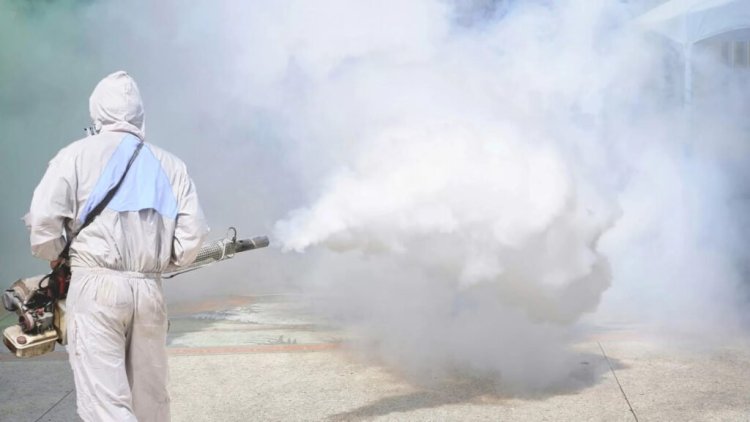What Is Fumigation And How Does It Take Care Of Insects?

Fumigation is a pest control method that involves using gaseous pesticides to eliminate insect infestations in various settings, including residential, commercial, and industrial spaces. This method is particularly effective for controlling large-scale infestations that cannot be managed through other pest control methods.
During the fumigation process, the space to be treated is completely sealed off and a fumigant gas is introduced into the area. The gas is then allowed to circulate throughout the space for a specified period, typically between 24-48 hours, depending on the severity of the infestation and the type of pests being targeted.
Fumigants penetrate all areas of the space being treated, including cracks, crevices, and other hard-to-reach areas, where insects such as termites and bed bugs often hide. The gas disrupts the insects' normal metabolic processes, leading to their eventual death.
Benefits Of Fumigation
Fumigation is a highly effective pest control method for eliminating insects in a variety of settings, from homes and apartments to commercial buildings and industrial facilities. Here are some of the key benefits of fumigation for eliminating insects:
Comprehensive Coverage:
Fumigation is effective at penetrating all areas of the treated space, including hard-to-reach cracks and crevices where insects often hide. This makes it a particularly effective method for controlling infestations of insects such as termites, bed bugs, and cockroaches, which can be difficult to eliminate with other pest control methods.
Eliminates all life Stages:
Fumigation is effective at eliminating insects at all life stages, including eggs, larvae, and adults. This means that it can effectively eliminate entire populations of insects, preventing them from reproducing and causing further damage.
Saves time and Money:
Fumigation is often more cost-effective than other pest control methods, particularly for large-scale infestations. It can also be completed more quickly than other methods, meaning that the treated space can be back in use sooner.
Minimal Disruption:
Fumigation is a relatively non-invasive pest control method that does not require extensive preparation or clean-up. Once the space has been sealed off and the fumigant gas has been introduced, there is minimal disruption to the surrounding area.
Environmentally Friendly:
Fumigation is an environmentally friendly pest control method that does not leave any residue or require the use of pesticides or other chemicals. The fumigant gas breaks down into harmless byproducts, leaving no lasting impact on the environment.
Prevents future Infestations:
Fumigation can also be used as a preventative measure to prevent future infestations. This is particularly effective for buildings that are at high risk for infestations, such as those located in areas with high termite activity.
However, fumigation is a complex and potentially dangerous process that should only be carried out by trained professionals. The fumigant gasses used in the process are highly toxic and can risk human health if not handled properly. Therefore, it is important to choose a reputable and experienced pest control company to carry out the fumigation process.
Precautions For Fumigation
Vacate the area: Before fumigation, the area to be treated should be vacated completely. People and pets should not be present in the treated area during the fumigation process, as the fumigant gas is highly toxic and can pose a risk to human health.
Seal off food and water sources: All food and water sources in the treated area should be sealed off before fumigation. This includes refrigerators, pantries, and pet food dishes. This helps to prevent contamination of food and water with the fumigant gas.
Remove plants and animals: All plants and animals should be removed from the treated area before fumigation. This includes houseplants, aquariums, and any other animals or pets.
Inform neighbours: If you live in an apartment complex or other shared building, it is important to inform your neighbours of the fumigation. This will allow them to take any necessary precautions to protect themselves and their pets.
Proper ventilation: After fumigation, the treated area should be ventilated properly to remove any residual fumigant gasses. This includes opening windows and doors and using fans to circulate air throughout the space.
Follow instructions: It is important to follow the instructions provided by the pest control company and to comply with all safety precautions. This includes wearing protective clothing and equipment if necessary and following any specific instructions regarding post-fumigation cleanup.
Conclusion:
Fumigation is a powerful pest control method that can effectively eliminate a wide range of insect infestations. However, it should only be carried out by trained professionals and with proper precautions to ensure the safety of both people and pets. If you are dealing with a pest infestation and are considering fumigation as a solution, be sure to consult with a reputable and experienced pest control company to learn more about your options and ensure the best possible outcome.

 drseervi
drseervi 















